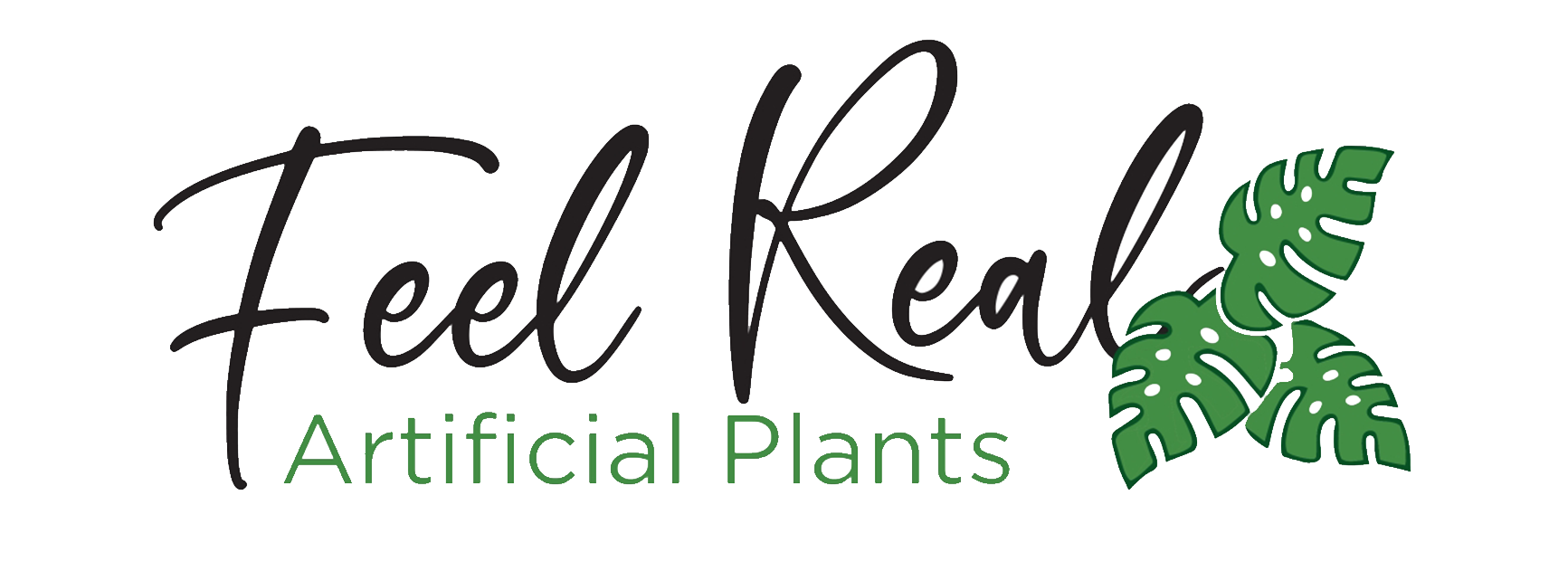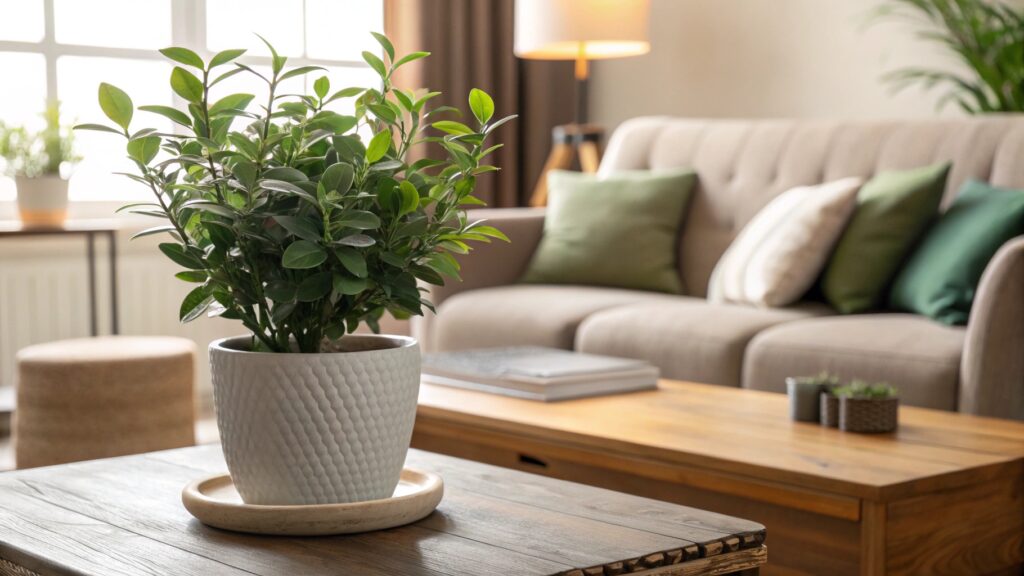Artificial plants have come a long way from the plastic, shiny versions of the past. With advancements in design and materials, they can now be a stylish addition to any space. But the question still lingers: are fake plants tacky? Modern artificial plants in 2025 are a world away from their plastic predecessors, offering incredible realism and style.
This guide reveals why today’s high-quality faux plants have become a sophisticated design solution for any space—from private residences to commercial properties, both indoors and out.
Last Updated: 14th, August 2025 | Estimated Reading Time: 9 Minutes
Tacky to Timeless: Modern Artificial Plants
The truth is, early fake plants often were unconvincing. Poor-Quality Plants made from shiny, cheap plastic or poorly constructed fabric can be a dead giveaway. However, advancements in materials and manufacturing have revolutionized artificial plants. Today’s high-quality options are crafted with such attention to detail—from leaf venation to subtle color variations.

Modern Artificial Plants use advanced manufacturing techniques, realistic textures, and natural color variations that make them virtually indistinguishable from real plants. High-end faux plants incorporate multiple leaf shapes, natural imperfections, and even subtle color gradients that mimic real plant growth patterns.
As a leader manufacturers in this industry, we study real plants more closely, using better materials like silk, high-grade plastics, and natural fibers. Our morden premium artificial plants feature hand-painted details, realistic bark textures, and weighted bases that give them the authentic feel of living plants.
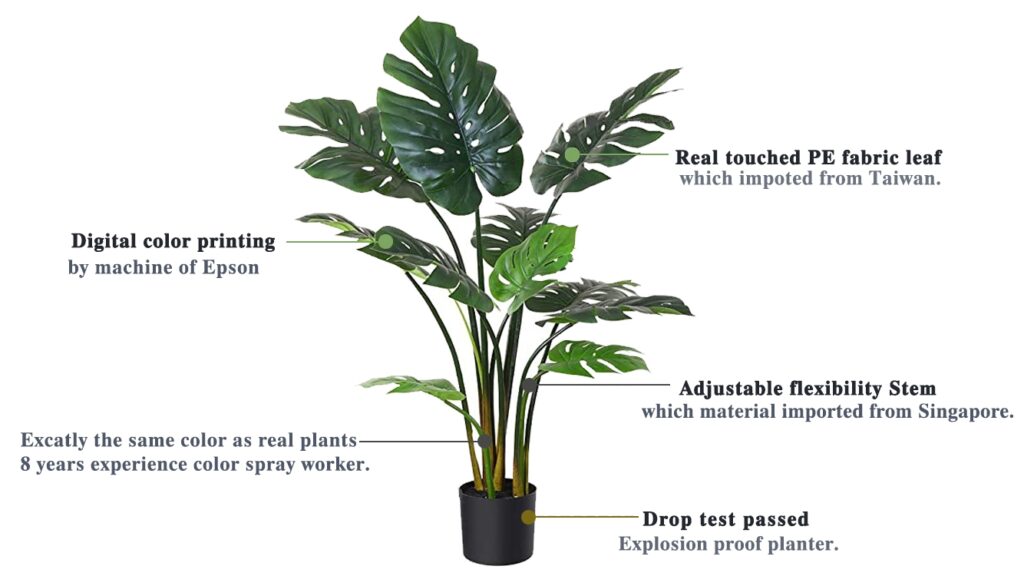
Why Are More People Choosing Faux Plants?
Artificial plants outperform real plants in specific environments and lifestyle situations where consistent beauty matters more than living benefits.
Transform Any Dark Space Into a Green Paradise: Achieve stunning greenery in windowless offices, interior hallways, basements, or dim corners where real plants would die. From indoor foliage to fake outdoor shrubbery, your design vision isn’t limited by light availability—create lush displays anywhere you want them.
Eliminate Maintenance Headaches Forever: Install beautiful plants in high cabinets, difficult corners, or commercial spaces without worrying about watering schedules, pruning, or soil mess. Your greenery stays perfect whether you’re there daily or away for months.
Guarantee Perfect Appearance Year-Round: Maintain flawless presentation in rental properties, vacation homes, and commercial spaces regardless of occupancy or seasonal changes. No more replacing dead plants or dealing with inconsistent appearance that affects property value.
Create Safe, Allergen-Free Environments: Enjoy beautiful plant displays without pollen, mold spores, or soil-based allergens—perfect for medical facilities, schools, and sensitive individuals. Pet owners can safely showcase stunning varieties like lilies or philodendrons without endangering beloved cats or dogs.

What Makes Faux Plants So Realistic in 2025?
It’s a combination of superior materials, advanced manufacturing techniques, and artistic design. High-quality artificial plants leverage technologies like UV resistance to prevent fading and ensure longevity. The secret lies in attention to detail. The molds used are often created from real plants, capturing every intricate detail. You’ll find that the best faux plants aren’t just green; they have nuanced color palettes, reflecting the true diversity of nature.
Modern artificial plants incorporate imperfections found in nature – a variation in green tones – making them appear more organic and less like mass-produced plastic. This commitment to realism is what sets premium faux plants apart.
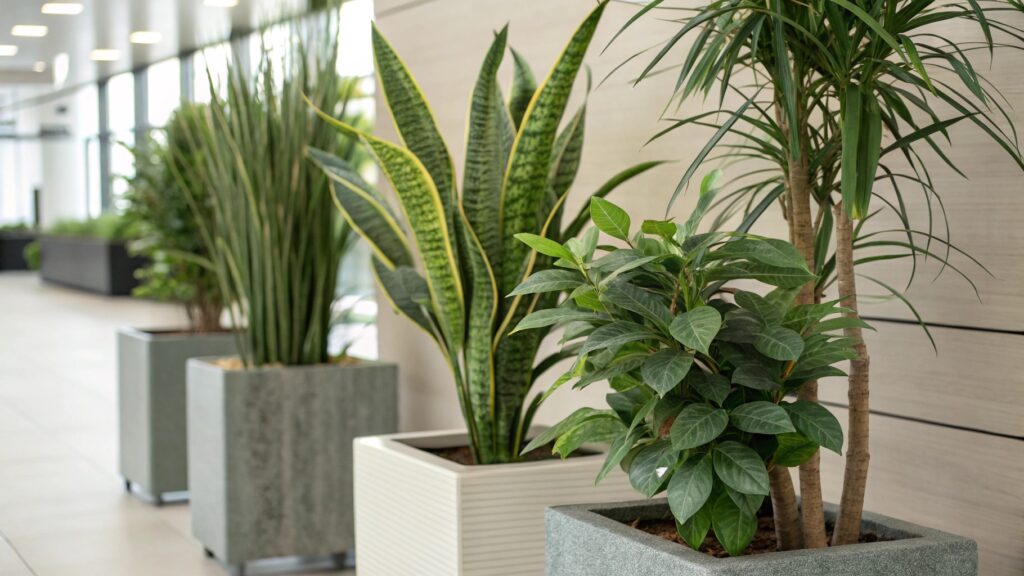
Material Quality: Cheap vs. Premium Faux Plants
Low-quality artificial plants use inferior materials like vinyl and low-grade PVC that immediately betray their artificial nature. These mass-produced plants feature unnaturally shiny surfaces, uniform coloring without natural variation, and rough textures that feel nothing like real foliage.
Premium artificial plants feel as real as they look by combining advanced materials—from flexible, UV-proof polymers for the leaves to detailed, injection-molded stems and solid wood trunks for authentic texture and form.
Advanced manufacturing processes create matte finishes with varied textures that feel soft and flexible like living tissue, and multi-layered color applications that mimic natural gradients. Each leaf features unique surface patterns and subtle imperfections, while hand-finishing techniques ensure no two elements appear identical.
These advanced materials are particularly crucial for outdoor artificial plants, which must withstand UV exposure, temperature fluctuations, and weather elements while maintaining their realistic appearance.
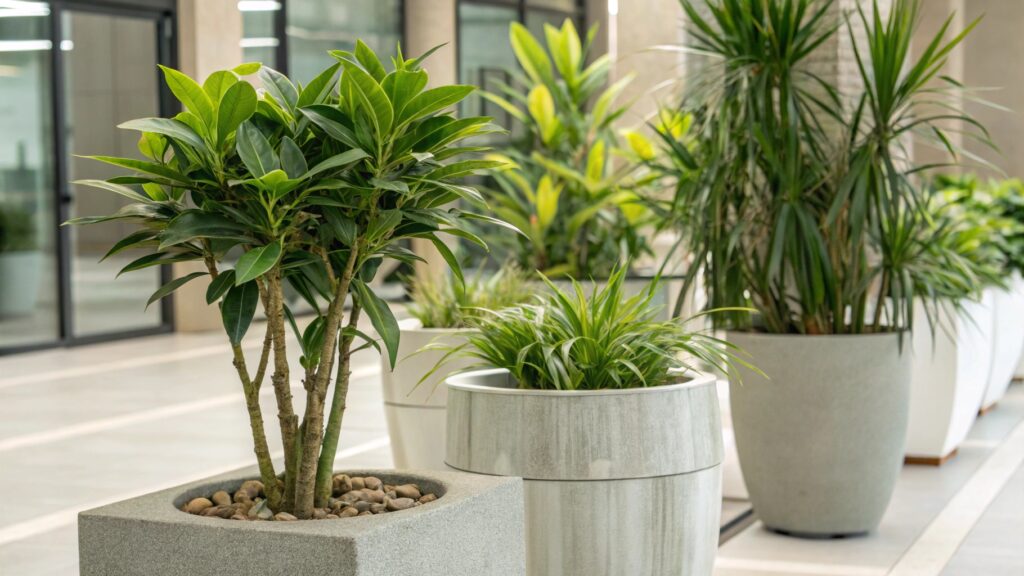
Avoiding Tacky: Choose Quality Faux Plants
The line between a “tacky” fake plant and a stunning botanical sculpture comes down to a few key details. As a passionate manufacturer, we believe in empowering you to spot true quality.
Focus on materials, construction quality, and natural details when selecting artificial plants. Avoid obviously artificial features like perfectly uniform leaves, unnatural colors, or flimsy construction that screams “fake.”
Choose the plants with varied leaf sizes, natural color gradations, and realistic imperfections. Quality artificial plants include natural variations that real plants display. The stems should bend naturally and feel substantial, not hollow or flimsy.
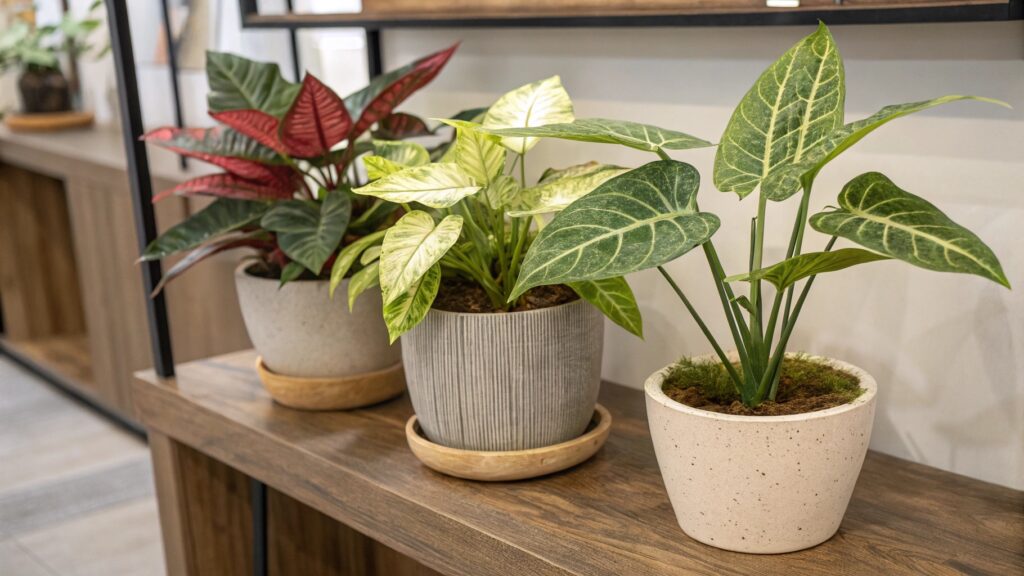
The Four Pillars of Premium Artificial Plants:
Exceptional craftsmanship: High-end artificial plants are handcrafted by our botanical artists. They position each leaf, vine, and branch individually. Our skilled artisans examine every inch for imperfections and arrange elements to achieve the most convincing natural appearance possible.
Superior materials and texture: When you touch quality artificial leaves, you’ll feel natural texture variations and softness that perfectly mimic real plant surfaces. Premium artificial plants use advanced materials like high grade polyethylene (LDPE) and silk fabrics with inherent UV-resistance. Scientific studies on UV degradation show how untreated polymers break down under solar radiation, which is why our UV-stabilization technology is essential for maintaining realistic appearance over years.

Custom Options: Choose a supplier that can offer extensive customization to match your exact vision and space requirements. You can select specific plant varieties, adjust heights from tabletop to ceiling-height trees. You can also choose container styles and colors and modify fullness and branch density.
At FeelReal, our design team creates bespoke solutions for challenging environments—UV-resistant outdoor installations, fire-retardant commercial displays, or pet-safe family spaces. Whether you need anti-UV olive trees for a garden, fake outdoor shrubbery for landscaping projects, or oversized palms for a hotel lobby, we can create the products that integrate seamlessly with your design goals.
Professional-Grade Engineering: A flimsy construction is a clear red flag. Quality is engineered from the inside out. Our plants are built with weighted bases for stability and strong, yet flexible, wire cores in the stems. This allows you to shape the branches naturally while ensuring they hold their position, even in high-traffic commercial environments. This robust engineering guarantees durability for both indoor and outdoor applications.
Why Premium Artificial Plants Are Worth It?
If you value long-term beauty, zero maintenance, and consistent style, premium artificial plants are a fantastic investment. While the upfront cost of high-quality artificial plants might be more than some live plants, consider the long-term savings. You’ll have no ongoing costs for water, fertilizer, pesticides, or replacing plants that didn’t survive your conditions. Premium faux plants are truly a “buy it once, enjoy it for years” ideal solution.
Imagine you want a stunning orchid in your bathroom. A real orchid might struggle with humidity fluctuations and eventually fade. A high-quality artificial orchid, however, will look vibrant and perfect year after year, with just an occasional dusting.
From our experience, the real customer pain point is wasted investment—when a plant cracks, warps, or fades after just one season. Inferior plastics simply can’t withstand real-world temperature swings and UV exposure. That’s why we engineer our premium artificial plants for longevity, using commercial-grade polymers that maintain their color, flexibility, and structural integrity for years. It’s the difference between a seasonal decoration and a lasting asset.
The value of premium artificial plants lies in their durability, consistent appearance, and the freedom they give you from plant care chores. This makes them a smart and stylish choice for busy lifestyles or spaces where live plants struggle.

2025 Latest Developments and Trends in Artificial Plants
The world of artificial plants is constantly evolving. In 2025, the focus is sharply on hyper-realism and sustainability. We’re seeing even more sophisticated molding techniques. The trend is moving towards artificial plants that not only look real up close but also feel more realistic to the touch, with varied textures and weights.
Consumer demand is shifting towards larger, statement artificial plants and trees that can define a space. There’s also a rising interest in unique and exotic faux plant varieties that are difficult to maintain as live specimens. The quality of artificial plants available in 2025 means you can confidently embrace these trends.
In conclusion, whether or not fake plants are tacky depends largely on their quality and how they are used. While cheap and poorly made artificial plants may indeed appear tacky, high-quality versions can serve as a stylish and convincing alternative to real plants. By carefully choosing realistic materials, repotting them into attractive containers, placing them thoughtfully, and even mixing them with real plants, artificial greenery can become a beautiful addition to any decor.
